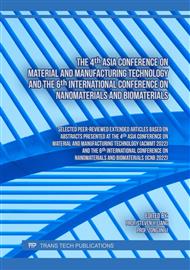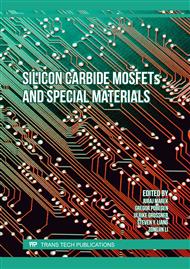p.17
p.23
p.31
p.39
p.45
p.55
p.61
p.67
p.75
Electrospinning of Ternary Aqueous Solutions of Polyvinyl Alcohol, Chitosan and Salicylic Acid
Abstract:
The electrospinning technique is being widely used in the fabrication of micro and nanofibers, with a myriad of biomedical applications such as drug inoculation, tissue regeneration and scaffold production. In the present article, nanofibers based on polyvinyl alcohol (PVA), chitosan (C) and salicylic acid (SA) were developed experimentally. Solutions at 18% w/w of PVA and 3% w/w of C and SA were prepared using always distilled water as solvent. Solution with C and SA (labelled as CSA solution) had the same amount of both substances in it. Then, mixtures at 100/0, 98/2, 96/4, 93/7 and 90/10 in PVA/CSA weight ratio were prepared. The rheological behavior of the solutions was evaluated and they were subsequently electrospun. The samples were characterized by scanning electron microscopy, differential scanning calorimetry and Fourier transform infrared spectroscopy in attenuated total reflection mode.
Info:
Periodical:
Pages:
45-52
Citation:
Online since:
May 2023
Keywords:
Price:
Сopyright:
© 2023 Trans Tech Publications Ltd. All Rights Reserved
Share:
Citation:



